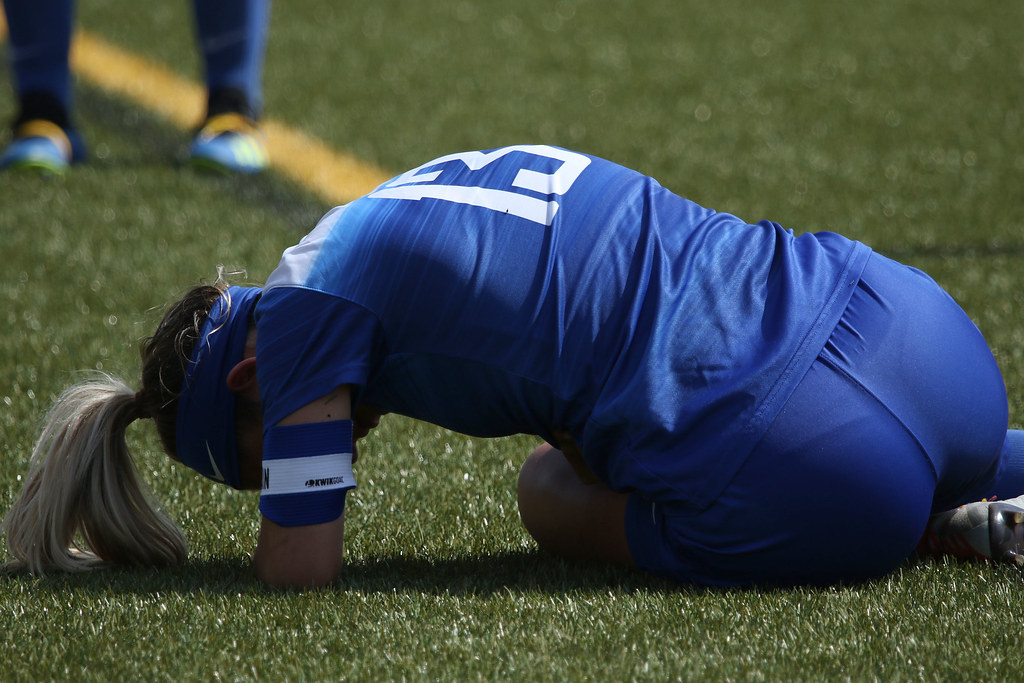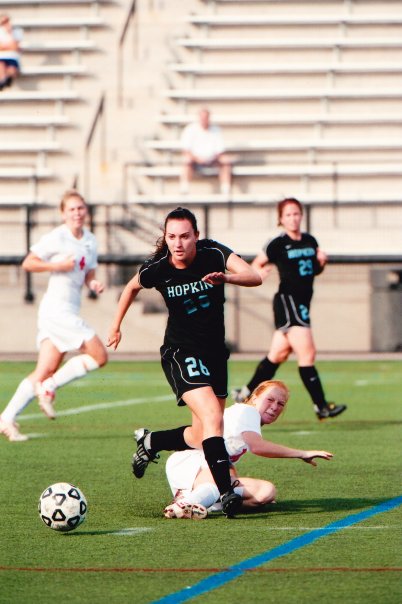
10 May Why Your Female Athlete Is Getting Tired in Games (And Why She Isn’t Explosive!)
It’s the first half.
Your female athlete is on fire.
She’s running off the ball. She’s exploding into space. She’s bursting past defenders.
She looks downright unstoppable.

Then, the halftime whistle blows and a switch flips. Hard left turn, in fact.
Come the final stretch of the game, she’s looking flat. She’s a step behind. She’s not as mobile. She’s slowing down.
She must be out of shape, right?
She’s slow? It must be her fitness.
She’s a step behind? It must be her fitness.
She’s not moving as much? It must be her fitness.
Let me ask you this: have you ever entertained the idea that it might not be a fitness issue? I know blaming fitness is the easy way out, and it’s what you’ve always resorted to when a female athlete is behind in the final minutes of competition.
But…
Have you checked her heart rate data? Methinks not.
Have you checked her game day meal prep? Methinks not.
Have you checked her sleep quality? Methinks not.
Have you checked her tactical game? Methinks not.
Have you checked her life stress? Methinks not.
So why do we need to look into these deeper when our female athlete is tired in games? Let’s dive in:
1. Heart Rate
When you peep into a female athlete’s heart rate data – when she’s training, playing, and resting – you get a better clue as to what is going on. The majority of girls who have come to me with a “fitness” concern were actually displaying a healthy heart rate at training, and they were not constantly in the red zone (>90% of heart rate max). When a female athlete is in a red zone all the time, even during light to moderate warm ups and technical drills, that is concerning and means she needs to develop a better aerobic base.
She also needs to train at this intensity more, so come game time, intense efforts are easier. Here is an excellent graphic from U.S. Soccer explaining the heat rate zones:

Most female athletes should be in the orange zone (Zone 2) a good chunk of the game, with a few spikes in the red zone during high intensity efforts. If you see your female athlete hanging around 70-80% of max HR most of competition, that is a good sign. I highly recommend the polar heart rate monitor HERE to wear during training and games.
Also, to build a more robust cardiovascular system with conditioning drills more intense than the game, check out my remote off-season training program HERE.
2. Nutrition
A tired female athlete could also be a result of lack of nourishment and fuel. If she didn’t eat breakfast before that early morning game, she will wane quickly because she does not have the fuel from carbohydrates to sustain her energy. Beyond her conditioning, lack of fuel and nutrients can cause the brain to react slow, leave her a step behind, take a wrong step, or get injured.
Lack of fuel and nutrients can cause the female athlete brain to react slow, leave her a step behind, become less agile, take a wrong step, or get injured. Share on XKey nutrients female athletes need before game time:
Carbohydrates – energy source
Protein – muscle repair
B Vitamins – energy boost
Iron – energy production
Vitamin D and Calcium – strong bones
Female athletes cannot go wrong with a big sandwich, bagel, or wrap a few hours before game time that is packed with carbs, protein and veggies. Be sure this sandwich has minimal heavy fats, since these can cause an unsettled stomach due to their slow digesting nature.

Another cool tip: a female athlete can have a quick energy snack at halftime with a simple carbohydrate (think fruit snack, bite of a bar, etc). Something itty bitty that gives a boost!
For more on what female athletes need for nutrition, check out The Strong Female Athlete book
3. Sleep
Sleep deprivation is one of the biggest issues plaguing young female athletes today – the amount of over-stimulation, over-stress, and under-nourishment causes a cyclical mess that hampers their sleep. Lack of sleep has a significant impact on reaction time, strength, speed, cognitive learning, and decision making, as well as injury risk. Other studies suggest that there are clear negative effects of sleep deprivation on reaction time and endurance.
Studies suggest that there are clear negative effects of
sleep deprivation on reaction time and endurance. Share on X
4. Tactical Game
Before the body gets tired, the mind gets tired. Is your female athlete not sharp tactically? Is she not thinking two steps ahead of the play, making her be slow to the ball, slow to the pass, slow to the sprint?
Check on how she reads the game, too.
5. Stress
Overwhelming stress can cause a bomb to a female athlete’s nervous system. Exam week, a breakup, a family emergency, a final project, etc can fatigue her nervous system and cause her to feel wiped out come game day.
Of course, balancing school and sports and friends can bring on an inevitable stress, here are a few tips to navigate the times so she is fresh for competition:
– Spend 10-30 minutes a day nasal breathing and taking a break
– Focus on nourishing the body as best she can
– Get more organized on the front-end, building a clear routine, so stress isn’t as much of a shock.
– Don’t rely on positive affirmations to make up for unpreparedness. Check out this video:
I hope this helped to shed light on the other reasons a female athlete could appear to “lack fitness.”
Before upping her training load and potentially injuring her by running her into the ground, check these other factors first. Please and thank you. 🙂
For a guide book on training the youth female athlete, get The Strong Female Athlete HERE

ABOUT THE AUTHOR

Erica Mulholland is a former college 3x All-American soccer player and now Hall of Famer from Johns Hopkins University. She holds a Master of Science in Exercise Science and has been helping female athletes of all sports with speed, agility, strength, power, and conditioning for over 13 years. She has worked with soccer, lacrosse, track, volleyball, softball, and basketball girls, and has inspired her athletes to strength train not just for sport, but for life.
Her athletes have gone on to play college sports at University of North Carolina, University of Maryland, Pittsburgh, University of Southern California, University of Detroit, Mercy, Northwestern, Eastern Carolina University, Georgetown, West Point, University of South Florida, University of Charleston, MIT, Johns Hopkins, Carnegie Mellon, Rutgers, Towson University, and have gone on to play for professional various clubs in Europe.
Of course, she is proud of her athletes who made it to the college and pro levels, but she is most proud of her girls who stick with being strong and healthy for a lifetime. The training she does is about getting into good habits young, so girls can take these tools with them even after sports end.
Need more personalized help from Erica? BOOK A CONSULT HERE

Interested in Remote Training for Female Athletes? BOOK A CONSULT HERE
Get Erica’s first book THE STRONG FEMALE ATHLETE
Get Erica’s second book FEMALE ATHLETE HIGH PERFORMANCE

Check out her podcast: The Strong Female Athlete


Julie Nyikos
Posted at 22:36h, 10 MayHi Erica, this is great info! Can you share the same for male athletes? Much appreciated!
erica
Posted at 22:43h, 10 MayAbsolutely same factors for male athletes. Although, females tend to be more iron deficient and susceptible to fatigue from anemia than males.